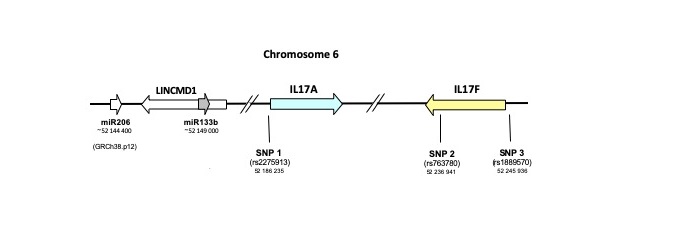Randi Krog Eftedal and Zlatko Dembic published a continuation of their research regarding risk factors for primary osteoarthritis, which still has an unknown cause. Osteoarthritis is a chronic, debilitating and progressive disease of the joint. Globally, osteoarthritis is ranked as the 11th highest contributor to disability, leading to great costs for the individuals affected as well as for the society. Among the risk factors for developing primary osteoarthritis are familial genetic components.This study is part of the project to take a closer look at the genetics suspected to play important roles in the development of osteoarthritis.
The results indicate that IL-17A and IL-17F are similar pro-inflammatory cytokines found in osteoarthritic joints, and suspected to contribute to development of osteoarthritis. To find possible association with disease, we used case-control study in the Croatian Caucasian population. We used single-nucleotide polymorphisms (SNPs) distributed on the chromosome 6 between these two IL-17 genes (Figure 1) as markers for the association analyses. We typed 500 patients with hip or knee osteoarthritis and compared them with about 600 healthy individuals. By combining the use of the three SNPs, we succeeded in defining two potent markers for detecting the risk for the disease. Our findings indicate that one marker was associated with the higher risk for developing hip osteoarthritis, and the other one with that of the knee.
These results suggest that the reason for developing hip might be different from the one that could make knee osteoarthritis. A possible explanation is that these joints could have separate vulnerabilities for the pro-inflammatory factor such as the IL-17 cytokine. It is also possible that other factors in vicinity on chromosome 6, like microRNAs or other genes might be involved instead (Figure 1). This insight might be useful for further studies or therapy of the disease.
Reference:
Eftedal, Randi Krog; Vrgoc, Goran; Jotanovic, Zdravko & Dembic, Zlatko (2019). Alternative Interleukin 17A/F Locus Haplotypes are Associated With Increased Risk to Hip and Knee Osteoarthritis. Journal of Orthopaedic Research. ISSN 0736-0266. doi: DOI 10.1002/jor.24334
Contact:
-
Randi Krog Eftedal
